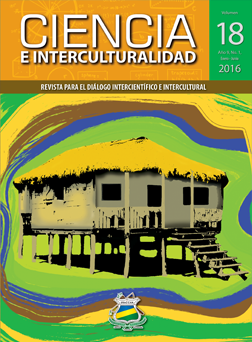Enseñanza del español, como segunda lengua en estudiantes indígenas, modalidad regular, URACCAN, Siuna, 2015
Palabras clave:
Metodologías de enseñanza, estilos de aprendizaje, estrategias de enseñanza.Resumen
La investigación, se realizó con estudiantes indígenas del primer año de las carreras: Ingeniería Agroforestal, Administración de Empresas e Informática Administrativa de la Universidad de las Regiones Autónomas de la Costa Caribe Nicaragüense (URACCAN) Siuna. La finalidad fue analizar la situación de la enseñanza aprendizaje del español como segunda lengua, modalidad regular, describir las metodologías de enseñanza, estilos de aprendizaje, actitudes y compromisos que asumen los estudiantes. Es cualitativa y según el nivel de profundidad, descriptiva desde el enfoque del interaccionismo simbólico. Participaron once estudiantes indígenas, cinco mujeres, seis varones. Según su pertenencia étnica, siete miskitos, cuatro sumu-mayangnas. El universo y la muestra representan el cien por ciento. Las para la recolección de la información fueron: entrevistas, grupos focales, la observación y la revisión documental.
Los hallazgos, reflejan la variedad de metodologías que utilizan los docentes, en las que existe coincidencia sobre la metodología participativa, elaboración conjunta e interrogatorios. Los estilos de aprendizaje que se identificaron fueron: con mayor frecuencia el acomodador, en segundo lugar el divergente. Entre las estrategias propuestas para facilitar el proceso educativo del español como segunda lengua, se destacan: atención a la diversidad mediante tutorías de acompañamiento docente, la práctica de técnicas y hábitos de estudio.
Summary
The research was conducted with indigenous students of first year from the careers of: Agroforestry Engineering, Business Administration and Administrative Computing of the University of the Autonomous Regions of the Caribbean Coast of Nicaragua (URACCAN), from Siuna campus. The purpose was to analyze the situation of teaching-learning Spanish as a second language in the regular modality, describe the teaching methods, learning techniques, attitudes and commitments that are assumed by the students. The study is qualitative and according to the level of profoundness it’s descriptive from the perspective of symbolic interactionism. Eleven indigenous students participated, five women, six men. According to their ethnicity seven were Miskitus and four Sumu-Mayangnas. The universe and the sample represents one hundred percent. The instruments for data collection that was used were based on interviews, focus groups, observation and document review.
The findings reflect the variety of methodologies that is used by the teachers, where there is agreement on the participative methodology, the joint elaboration as well as the interrogations. The learning techniques identified were: in first place the usher, and secondly the divergent. Among the strategies proposed to facilitate the educational process of Spanish as a second language we find: attention to diversity through teacher tutoring accompaniment, the practice of techniques and the implementation of study habits.

